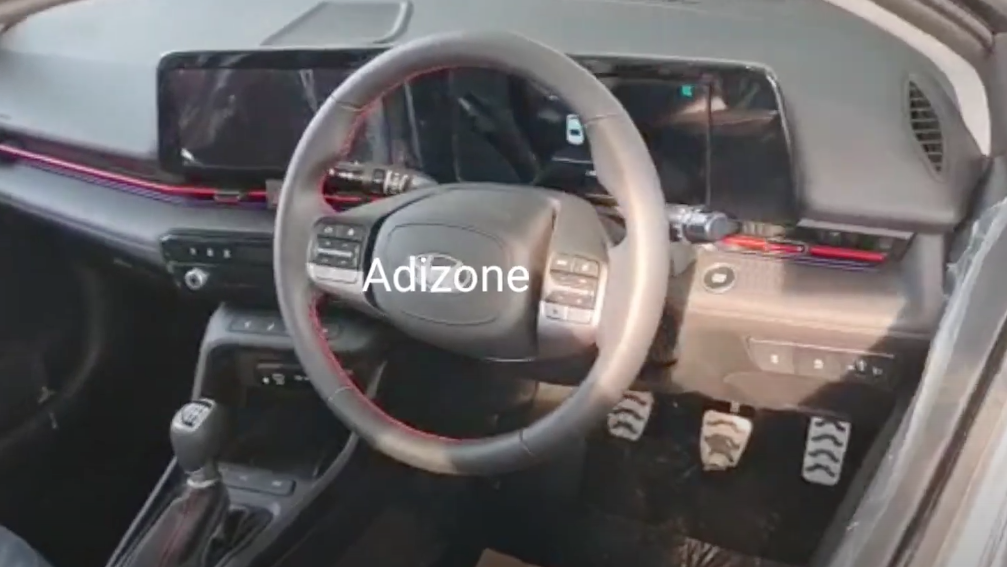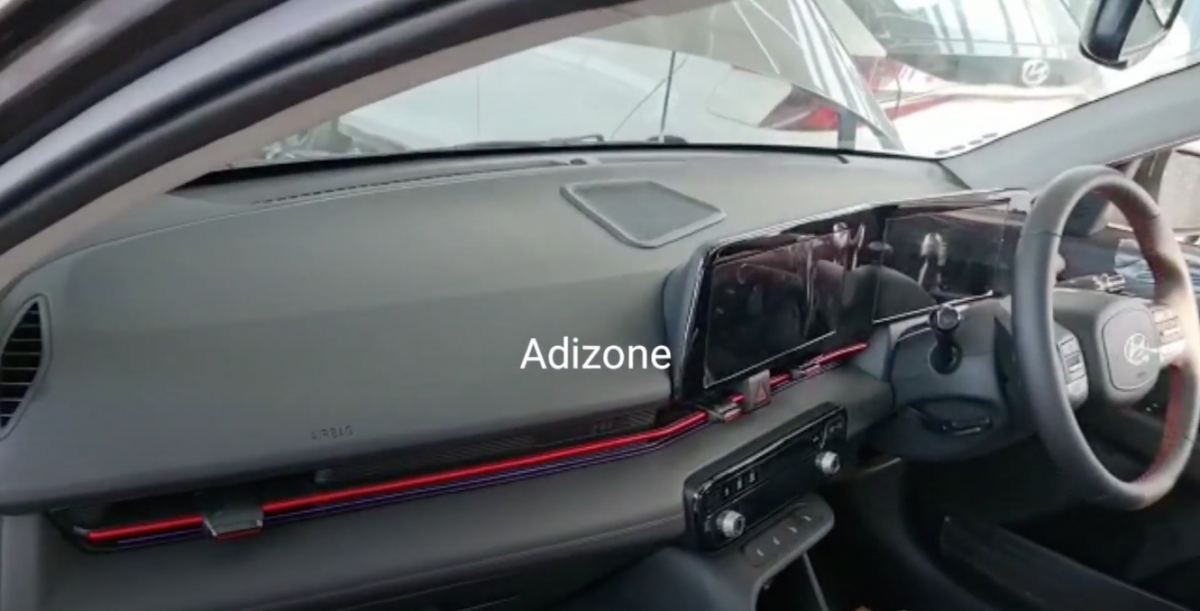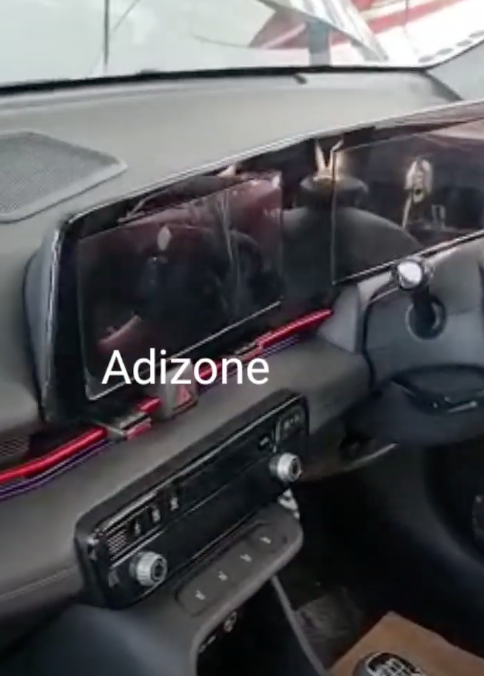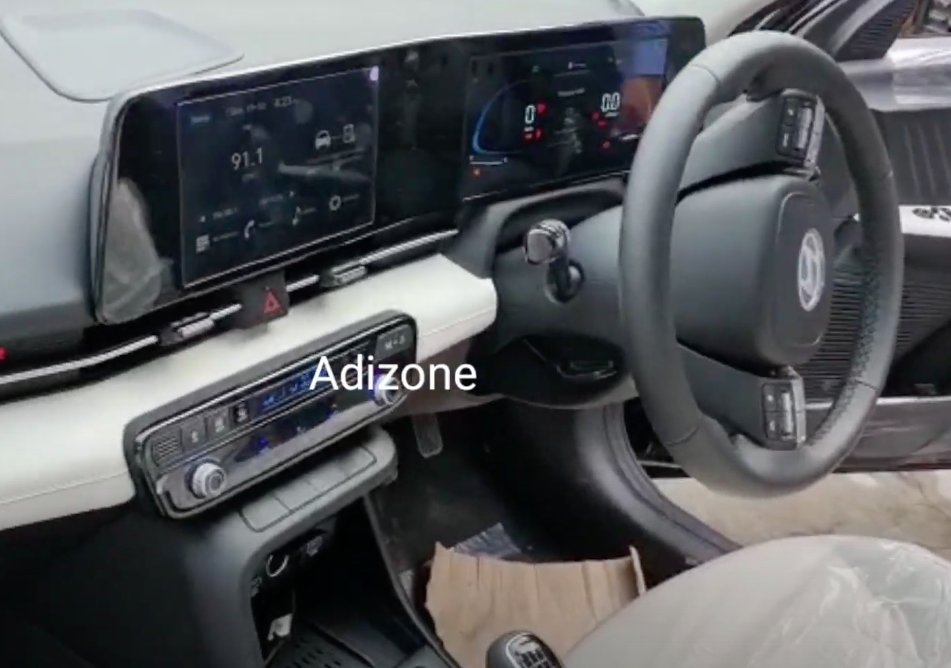The 2023 Hyundai Verna images have just leaked ahead of its launch. The spyshots reveal the SX variant in more details. Hyundai will launch the new Verna on 21 March, 2023. Meanwhile bookings for the same have already commenced with a token amount of INR 25,000.
What’s new in the 2023 Hyundai Verna?
The black model is of the SX variant. It sits in the middle of the Verna variants and misses out on the ADAS features of the top-end Vernas.
The car comes with a sunroof, alloy wheels, LED tail headlamps similar to the top-end variant and front parking sensors. At the back, the car gets a full-width LED bar.
Compared to earlier spyshots, the car misses out on certain chrome elements and ORVM mounted cameras of the 360-degree camera system.
On the inside, Hyundai has equipped this variant with black and beige colour theme. The new Verna comes with a two-spoke steering wheel, wireless charger and we can also see the gear lever of the manual transmission. It gets dual horizontal displays which are angled towards the driver. The car also gets dual-function buttons that work as both AC and infotainment controls.
Other Features of the 2023 Hyundai Verna
Meanwhile, the higher-end variant comes with premium features like an integrated 10.25-inch HD audio video navigation system and digital cluster, the 8-speaker Bose premium sound system and ADAS to name a few.
Powertrain options of the 2023 Hyundai Verna
As for the engine, the Verna gets a new 1.5-litre turbo petrol motor. It is the most powerful in the mid-size sedan segment, making 158 BHP of max power and 253 Nm of peak torque. As for the gearbox options, we get a 6-speed manual or a 7-speed DCT. The second engine on offer is the 1.5-litre naturally aspirated petrol engine. It makes 113.4 BHP and 144 Nm and is available either with a 6-speed manual transmission or intelligent variable transmission (IVT).
Also Read – 2023 Hyundai Verna 1.5L turbo DCT variant spotted before launch.







